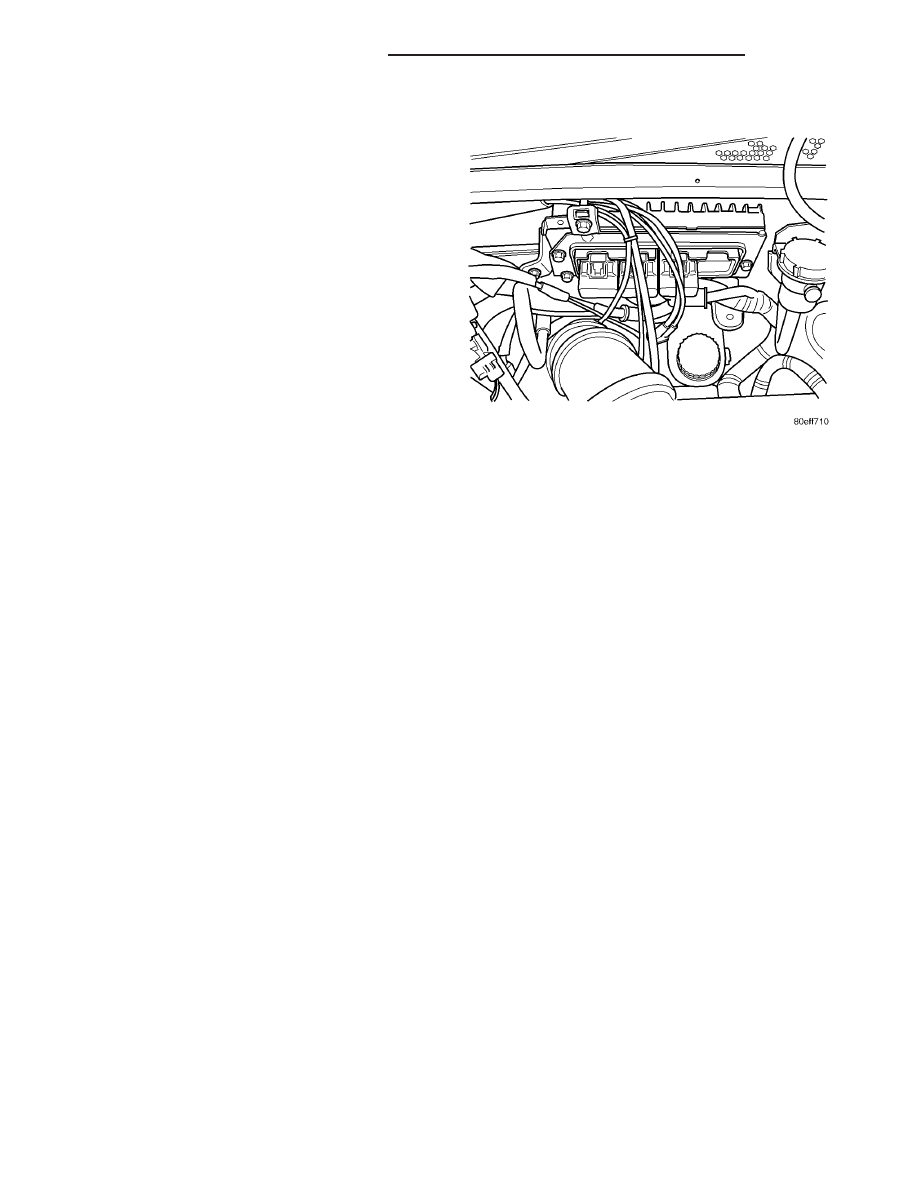Dodge Neon / Neon SRT-4. Manual - part 74

OPERATION - DATA BUS COMMUNICATION
RECEIVE - PCM INPUT
The PCM uses the SCI communication bus to pre-
form engine diagnostics and flash operations. The
transmission side of the PCM uses the SCI commu-
nication bus to flash new software. However, diagnos-
tics is performed via the vehicles J1850 bus for the
transmission side of the PCM.
OPERATION - IGNITION SENSE - PCM INPUT
The ignition sense input informs the Powertrain
Control Module (PCM) that the ignition switch is in
the crank or run position.
OPERATION - PCM GROUND
Ground is provided through multiple pins of the
PCM connector. Depending on the vehicle there may
be as many as two different ground pins. There are
power grounds and sensor grounds.
The power grounds are used to control the ground
side relays, solenoids, ignition coil or injectors. The
signal ground is used for any input that uses sensor
return for ground, and the ground side of any inter-
nal processing component.
The PCM case is shielded to prevent RFI and EMI.
The PCM case is grounded and must be firmly
attached to a good, clean body ground.
Internally all grounds are connected together, how-
ever there is noise suppression on the sensor ground.
For EMI and RFI protection the housing and cover
are also grounded separately from the ground pins.
OPERATION
OPERATION
The PCM receives input signals from various
switches and sensors that are referred to as PCM
Inputs. Based on these inputs, the PCM adjusts var-
ious engine, transmission, and vehicle operations
through devices that are referred to as PCM Outputs
(Fig. 5).
NOTE: PCM Inputs:
• Air Conditioning Controls
• Ambient Air temperature Sensor
• ASD Sense
• Baro/Tip (Turbo)
• Battery Voltage
• Battery Temperature Sensor
• Brake Switch
• Camshaft Position Sensor
• Clutch Upstop Switch
• Clutch Interlock
• Crankshaft Position Sensor
• Engine Coolant Temperature Sensor
• Fuel Level Sensor (Bus message)
• Ignition Switch
• Intake Air Temperature Sensor
• J1850
• Knock Sensor (2.0, 2.4L)
• Natural Vacuum Leak Detection (NVLD)
• Manifold Absolute Pressure (MAP) Sensor
• Oil Pressure Switch
• Oxygen Sensors
• Power Steering Pressure Switch
• SCI Receive
• Speed Control Switches
• Throttle Position Sensor
• Transmission Control Relay (Switched B+)
• Transmission Input Shaft Speed Sensor
• Transmission Output Shaft Speed Sensor
• Transmission Pressure Switches (L/R, 2/4, OD)
• Transmission Range Sensor (TRS)
• Transmission Oil Temperature Sensor (Integral
to TRS)
• Vehicle Speed Sensor (MTX-equipped models)
NOTE: PCM Outputs:
• Air Conditioning Clutch Relay
• Auto Shutdown (ASD) Relay
• Charging Indicator Lamp (Bus Message)
• SCI Transmit
• Proportional Purge Solenoid
• EGR Solenoid
• Fuel Injectors
• Fuel Pump Relay
• Generator Field
• Idle Air Control Motor (2.0/2.4L)
• Ignition Coils
Fig. 5 PCM
8E - 6
ELECTRONIC CONTROL MODULES
PL/SRT-4
POWERTRAIN CONTROL MODULE (Continued)